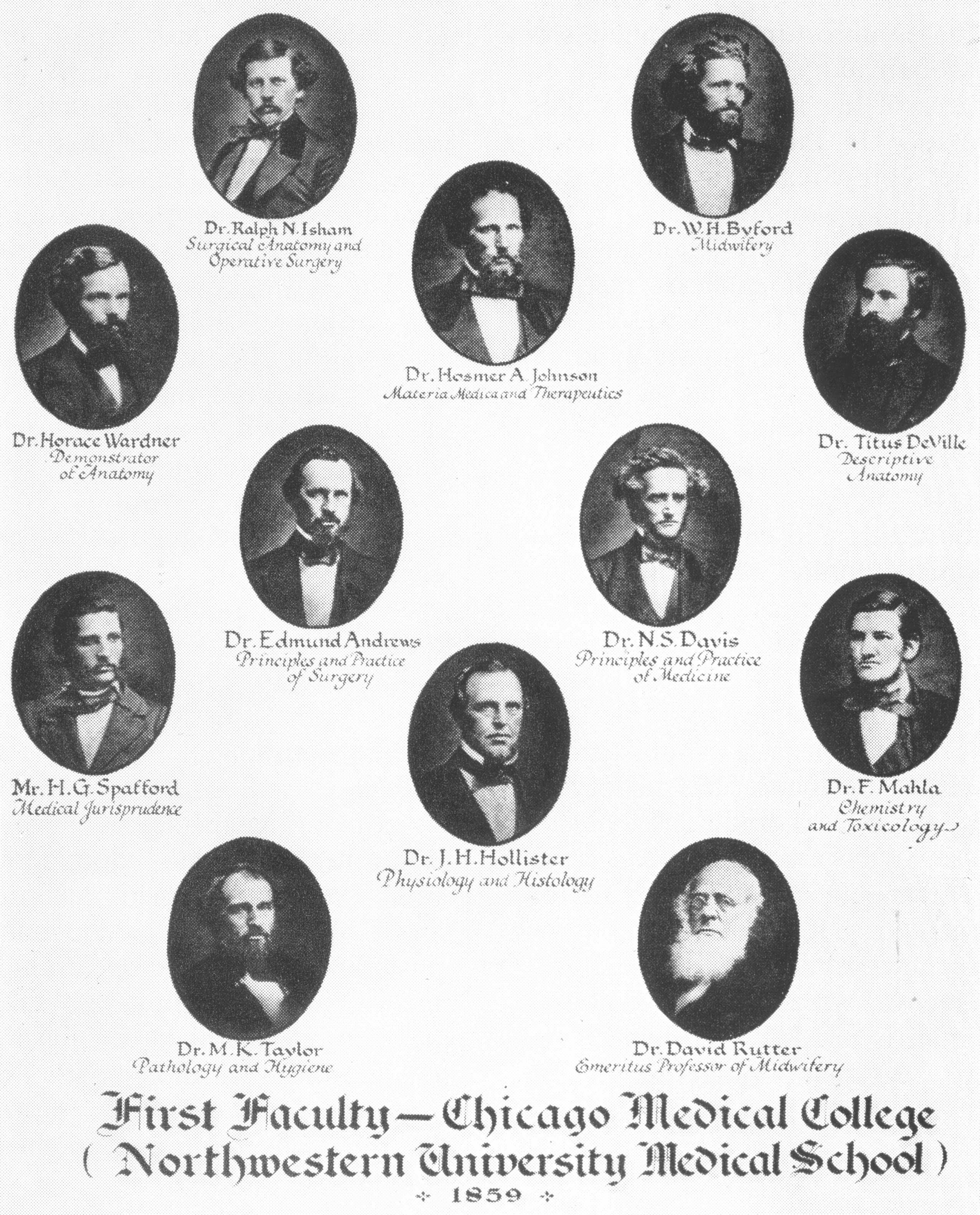Recent acquisition shows Feinberg's founders and first professors
By Emma Florio and Katie Lattal, Galter Special Collections
We are excited to announce that Galter Library Special Collections recently acquired the earliest known photographs of the first faculty of the medical school. Earlier this year alumnus James Conway (MD ‘63) donated the Frank Andrews photograph collection, which he had initially found in the home of the Andrews family during an estate sale.
The Andrews family was integral to the establishment and early success of the medical school. Patriarch Edmund Andrews was a member of the small group of faculty that fractured from Rush Medical College in order to form a medical school with academically rigorous requirements. This group’s endeavor resulted in the founding of the Medical Department of Lind University in 1859, the earliest incarnation of Feinberg School of Medicine. Edmund was a talented and pioneering surgeon, and he served as Professor of Surgery at the school for 46 years. His sons Frank and E. Wyllys Andrews were both graduates of the school—called Chicago Medical College at that time—and served on the faculty, as well: Frank in Gynecology and Wyllys in Surgery. The bulk of the new collection consists of photographs and postcards from the family of Frank Andrews. It complements our existing Andrews family collections, including medical tools from Edmund Andrews and case books and medical instruments from E. Wyllys Andrews.

The highlight of the collection is a composite of photographs of the first faculty of the Medical Department of Lind University, which includes the seven founders (see image above). These men and their positions in that first year are (left to right, top to bottom):
Row 1
- John H. Hollister (founder) – Professor of Physiology and Histology
- Ralph N. Isham (founder) – Professor of Surgical Anatomy and Operations of Surgery
Row 2
- Edmund Andrews (founder) – Professor of Principles and Practice of Surgery and Clinical Surgery
- Hosmer A. Johnson (founder) – Professor of Materia Medica
- Horatio G. Spafford – Professor of Medical Jurisprudence
Row 3
- Titus DeVille – Professor of Descriptive Anatomy
- Nathan Smith Davis (founder) – Professor of Principles and Practice of Medicine and Clinical Medicine
- William H. Byford (founder) – Professor of Obstetrics and Diseases of Women and Children
- Horace Wardner – Demonstrator of Anatomy
Row 4
- Frederick Mahla – Lecturer on Organic Chemistry, Toxicology, and Inorganic Chemistry
- David Rutter (founder) – Emeritus Professor of Obstetrics and Diseases of Women
- Morse K. Taylor – Professor of General Pathology and Public Hygiene
We have determined that these portraits must have been taken during the school’s first year of existence, 1859-1860, based on a few different factors:
- The 12 men depicted are the exact 12 who comprised the faculty in that first year.
- Titus Deville, Professor of Descriptive Anatomy, only stayed at the school for one year; he returned to his native England in 1860.
- The photography studio named at the bottom, Wallis Brothers, only existed from 1860 to 1866 under that name.
These clues indicate that the portraits must have been taken in 1860, while Deville was still in the United States and after Wallis Brothers started doing business.

Questions arose, though, when we compared this 1860 composite to a similar item in our collection. This other composite (seen above) clearly uses the same photographs but notably switches the names of two sets of men–Horatio G. Spafford and Frederick Mahla, and Titus Deville and Horace Wardner. Which composite was correct? Fortunately, other portraits of Spafford and Wardner were easily discoverable on the Internet (see the comparisons below). Though we were unable to track down other portraits of Mahla and Deville, having portraits of one half of each mix-up was enough to determine that the composite from the Andrews house was correct.
 |
 |
|
Spafford ca. 1860, and later in life ca. 1885
(from the Library of Congress).
|
Wardner ca. 1860, and during the Civil War ca. 1861
(from the Library of Congress)
|
Updated: October 25, 2023